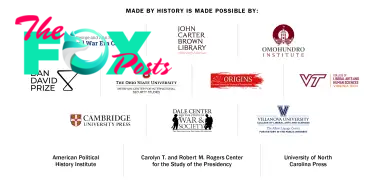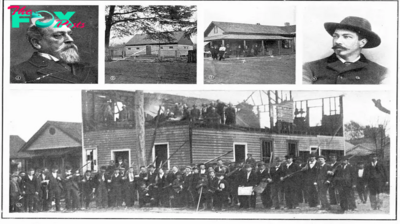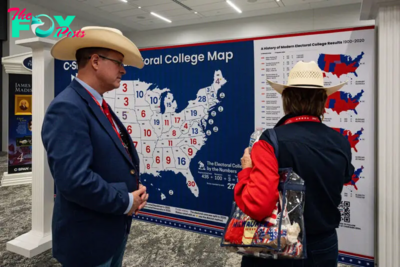History
J.D. Vance’s Vision of Appalachia Is Nothing New
On Monday, Donald Trump announced his vice-presidential nominee: freshman Republican Senator J.D. Vance, who has made a name for himself over the past decade thanks to the success of his 2016 memoir, Hillbilly Elegy. That book catapulted Vance into the political spotlight with a superficial account of the plight of the white working class, especially in Appalachia. It spotlighted the myriad problems Appalachian families face as they attempt to distance themselves from decades of abuse, alcoholism, and poverty that Vance suggested were endemic to the mountainous sections of Kentucky, Tennessee, Alabama, Georgia, the Virginias, and the Carolinas.
Hillbilly Elegy spent more than 60 weeks atop the New York Times bestseller list and became the basis for a movie of the same name in 2020. Its popularity, and the public profile that Vance has since created, hinge on a deep tradition of politicians and social commentators advancing a particular story of southern Appalachia as a backward place in need of saving because of its particular white and rural identity. It has proved an incredibly effective strategy, becoming the basis of many of the myths and stories white leaders tell themselves—and their voters—about who we are as a nation. Yet, those stories have never been about mere advocacy. They also further their promoters’ goals and agendas.
Protestant missionaries did much for this trend in the 1870s as they moved into Appalachia in search of souls to save after the Civil War. They saw the region as an isolated section of the country populated by poor white people who served the Union in that coNFLict, but who were neglected in its aftermath. Missionaries touted the idea that their work in the mountains was needed to not only salvage souls—and thus preserve a Protestant identity for the country—but also to reunite northern and southern whites under the banner of their race’s social supremacy. They admitted Appalachia was a backward and dirty place, but the very fact that its mountaineers were white meant it was worth the effort.
Read More: Why Trump Chose J.D. Vance
For the next two decades, missionaries pitched their efforts to “reclaim” Appalachia by purposely shocking readers and compelling them to donate to the cause. Through newspaper and magazine reports that took unusually extreme examples and portrayed them as common occurrences—like the Tennessee minister who accepted payment for his services with a shot of whiskey—missionaries told stories about the supposed laziness, dirtiness, and violence of Appalachia’s white residents. Their favorite technique was to capture readers’ attention with sensational descriptions of what seemed like African Americans’ dilapidated, filthy, and dark hovels in the woods, filled to the brim with barefooted and rag-clad people—and then surprise the reader by announcing the report was in fact, about a typical mountain white home. Outside aid was needed, the stories told readers, to bring mountain whites up to a respectable level if white Americans were to “hold the fort” of their social and political authority.
Yet even as they disparaged the region and its people—who were really no different from poor folks in other parts of the country—missionaries retained a sense of optimism about what a reformed Appalachia might mean for the nation. In their view, its rural nature and lack of racial diversity (also a lie) stood in stark contrast to America’s rapidly developing industrial centers and their immigrant populations, two trends the missionaries feared threatened the preservation of a native white American identity in the 20th century. As one commentator put it, Americans could always find “the original stuff of the nation” when they looked to Appalachia.
In the 1890s, a new spokesperson for Appalachian poor whites took the stage: Berea College’s president William Goodell Frost. A master at oratory, advertising, and public relations, Frost adapted the missionary plan to tilt his eastern Kentucky school’s funds away from its Black students and toward the white youth of the region. The future of the 2-3 million mountain whites of Appalachia was America’s future, Frost liked to say. Removed from the stress and bustle of modern life, they remained the nation’s “contemporary ancestors,” living as America’s white colonial forefathers had and preserving their venerable traditions. What did America need more than Americans like these, he asked?
To many white Americans, Frost’s question was spot on. He catered to fears around shifting and diversifying demographics to raise money for his school, and peppered almost every piece of Berea’s fundraising literature with references to the providence in “discovering” mountain whites at exactly the time when real “Americans [were] needed to offset a tide of undesirable foreign immigrants.” He alleged that Berea’s programs were what mountain whites needed to continue to reproduce at higher than average rates and excise the worst aspects of their isolation: their moonshining, their feuding, their lack of hygiene, and their limited Education.
Like the missionaries before him, Frost shared his embellished ideas and dreams for the region in high profile magazines and newspapers. But unlike those missionaries, he spread them further by taking them on the lecture circuit. His efforts paid off. Americans embraced Frost's vision for a re-made Appalachia and sent thousands of dollars to advance Berea’s cause. In the matter of decades, the ethos had spread. Thanks to the support of wealthy elites like John D. Rockefeller, Andrew Carnegie, and Henry Ford, as well as the endorsement of thousands of Americans who sent small checks, the entire southern Appalachian landscape became dotted by hundreds of small private schools and Health clinics aimed at recovering the human potential sequestered in the mountains.
Read More: Here's What We Know About Trump Vice President Pick J.D. Vance's Net Worth
During the 1920s and 1930s, it was eugenicists and federal officials who constructed a narrative of Appalachia to advance their agendas. This time, however, they wanted to convince Americans that many poor Appalachian whites were intermarried, lazy, of low IQ, and hereditarily “unfit,” rather than merely underprivileged and isolated as missionaries and Frost had claimed. Eugenicists had promoted this view for decades, but in the late 1920s, the federal government saw the benefits of buying into the narrative as it struggled to convince 2,000 mountain families to leave their homes in the hills and valleys slated to become Virginia’s Shenandoah National Park.
When it became clear they would not leave on their own accord, park promoters worked with psychiatrists Mandel Sherman and Thomas R. Henry to conduct “research” into those mountain families’ histories and living conditions. Their fabricated findings were published in 1933 as Hollow Folk, which National Park Service Director Arno B. Cammerer was able to use, in part, as justification for the forcible removal of some of those families. By 1935, Cammerer had won the battle, leaving former residents like Melancthon Cliser to write hopeless letters in protest. Speaking truth to the lies printed in Hollow Folk—which depicted mountain residents as uniformly poor, untrustworthy, and degenerate—Cliser described how he had been removed from a “modern home” with a bath, hot and cold water, electric lights, and a phone. Adjacent to this was a service station on 46 acres of land. “We made ourselves a nice home,” he concluded, before it was “taken away from us for a playground.”

These are the playbooks that Vance has adopted. Hillbilly Elegy in many ways repeats the more positive conclusions of the 19th-century missionaries (we should help these people), Frost (Appalachians are quintessential Americans, and something about them is important to the nation’s identity), as well as the negative ones of Mandel and Sherman (Appalachians are unvaryingly impoverished.) And while Vance is not a eugenicist and has no intention of removing people from their homes, he too has put forth a blanket narrative of Appalachia that labels its residents “lazy” and blames them for their poverty, rather than interrogating the decades of policies and social structures that have brought us to this moment.
The reason these tropes and ideas about Appalachia and the white working class remain effective is because the issues of earlier eras—economic insecurity, racial anxiety, questions about “who” America is for and “who” Americans are—persist into the 21st century. But Vance’s vision of Appalachia appears to be more about promoting his agenda, his political ascendancy, than about helping the people he claims to represent. Vance is not a hillbilly, but a grifter of the hillbilly trope. And like those that came before him, he is in effect preying on the people of Appalachia when he speaks and talks of them—distracting America from the fact that in writing an elegy for an imagined place and people, he has been busy crafting an acceptance speech for the role he’s now been placed in.
Tina A. Irvine is an assistant professor of History at Purdue University. Her first book, Americanizing Appalachia: Mountain Reform and the Pursuit of a White American Identity, is under contract with University of Chicago Press.
Made by History takes readers beyond the headlines with articles written and edited by professional historians. Learn more about Made by History at TIME here. Opinions expressed do not necessarily reflect the views of TIME editors.
-

 History5d ago
History5d agoWhat Christian Nationalism Looked Like in Practice
-

 History6d ago
History6d agoThe Deep Roots of Today’s Self-Development Industry
-

 History1w ago
History1w agoThe Abortion Debate Could Open an Overdue Conversation on Pregnancy Loss
-

 History1w ago
History1w agoThe Ambivalent History of Indigenous People and U.S. Citizenship
-

 History1w ago
History1w agoThe Catch-22 of Puerto Rico’s Status Referendum
-

 History1w ago
History1w agoAmericans Need to Know the Name of Alberto Fujimori
-

 History2w ago
History2w agoHow America Forgot a Crucial Lesson From Hurricane Disasters of the Past
-

 History2w ago
History2w ago#Tradwife Influencers Totally Misunderstand the Lives of 19th Century Women



























